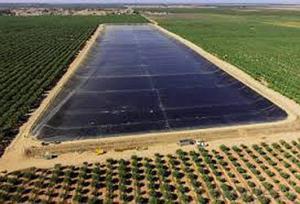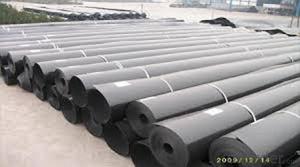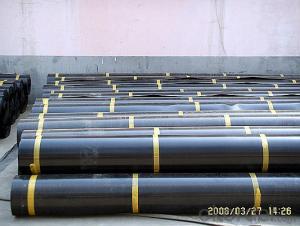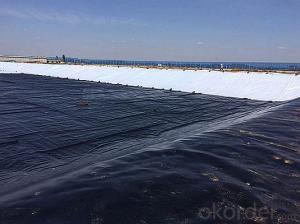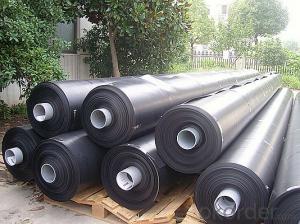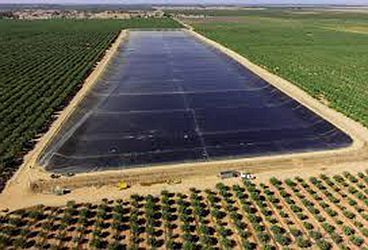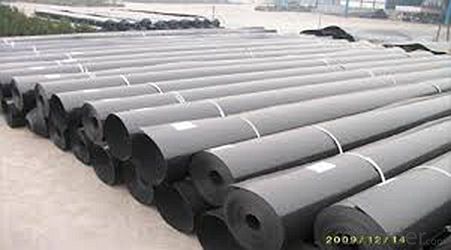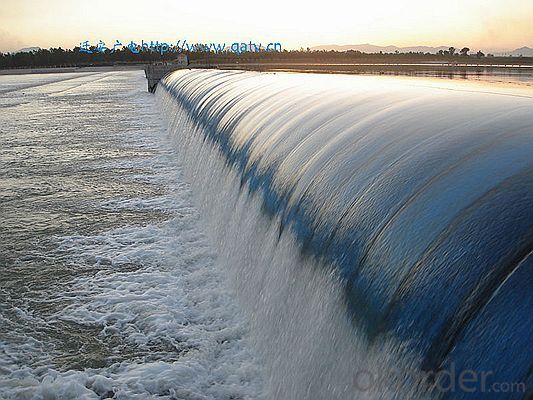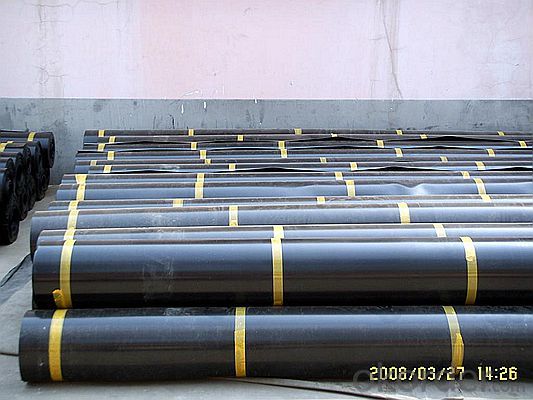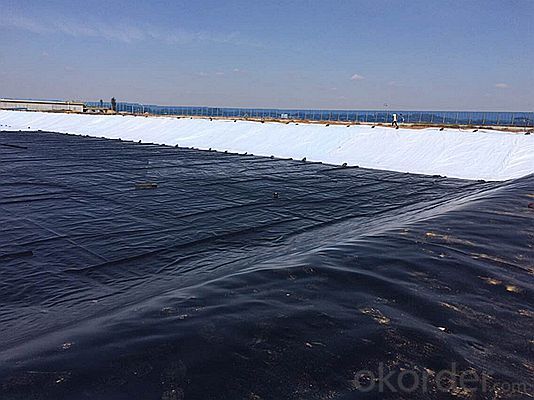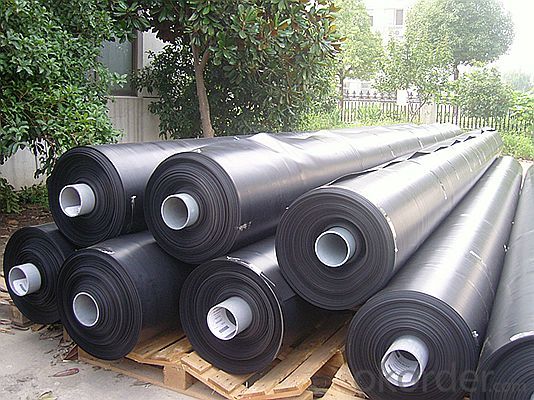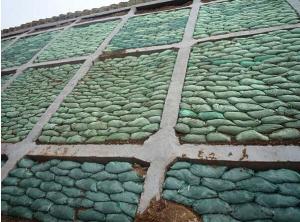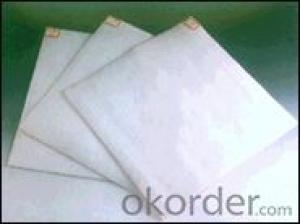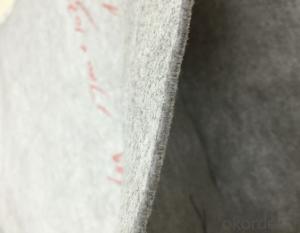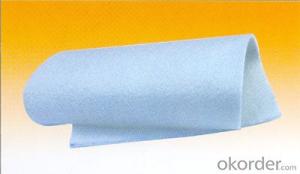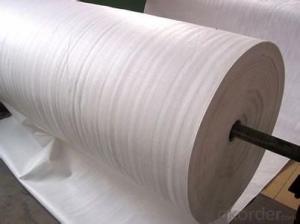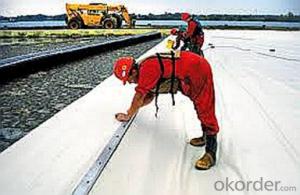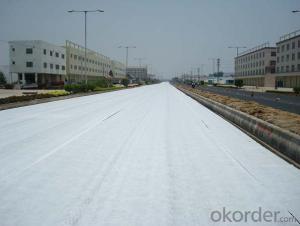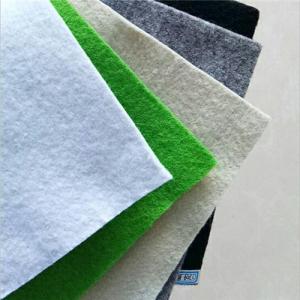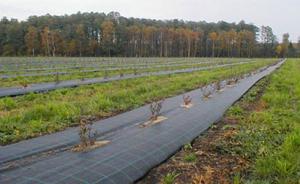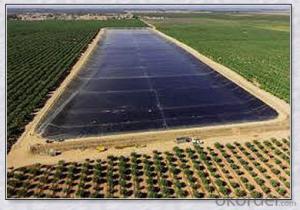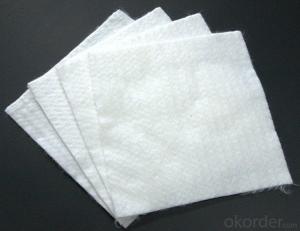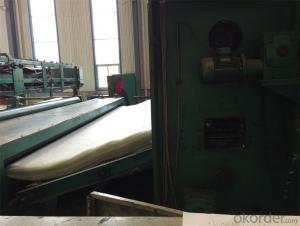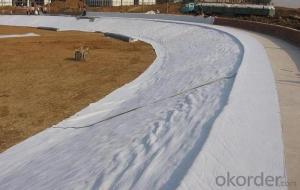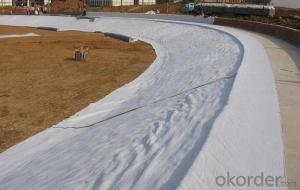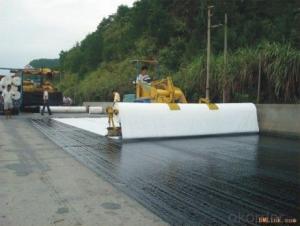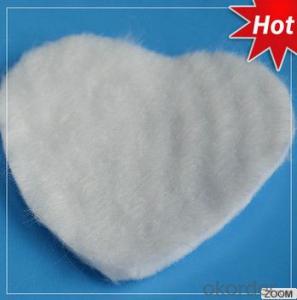Geotextile Non Woven Fabric Polyvinyl Chloride Low-Density Polyethylene Geomembrane
- Loading Port:
- China main port
- Payment Terms:
- TT OR LC
- Min Order Qty:
- 1000 m²
- Supply Capability:
- 1000000 m²/month
OKorder Service Pledge
OKorder Financial Service
You Might Also Like
Specification
Type:HDPE geomembrane
Material: High-density polyethyle
Thickness:0.1mm~3.0mm
Roll width:1m~8m Roll length:50m~100m
Color:Black or at your request
Density: 0.94g /cm3
Temperature range: -60oC -- +60oC
Life time: more than 50 years
Executive standard: GB/T 17643-2011
NO |
Item | Value | ||||||
| 0.75mm | 1.00mm | 1.25mm | 1.50mm | 2.00mm | 2.50mm | 3.00mm | ||
| 1 | Density (g/cm2) | 0.939 | ||||||
| 2 | Tensile propeties | |||||||
| Yield strength (N/mm) | 11 | 15 | 18 | 22 | 29 | 37 | 44 | |
| Break strength (N/mm) | 20 | 27 | 33 | 40 | 53 | 67 | 80 | |
| Yield elongation (%) | 12 | |||||||
| Break elongation (%) | ≥450 | |||||||
| 3 | Tear resistance (N) | 93 | 125 | 156 | 187 | 249 | 311 | 374 |
| 4 | Puncture resistance (N) | 240 | 320 | 400 | 480 | 640 | 800 | 960 |
| 5 | Stree crack tensistance (h) | ≥1500 | ||||||
| 6 | Carbon black | |||||||
| Carbon black content (%) | 2.0-3.0 | |||||||
| Carbon black dispersion | Carbon black dispersion (only near spherical agglomerates)fo r10 different | |||||||
| views 9 in categories 1 or 2 and 1 in category3 | ||||||||
| 7 | Oxidative induction time(OIT) | |||||||
| Standard OIT(min) | 100 | |||||||
| High pressure OIT(min) | 400 | |||||||
| 8 | Oven aging at 85°C | |||||||
| Standard OIT-% retained after 90 days (%) | 55 | |||||||
| High pressure OIT-% retained after 90 days (%) | 80 | |||||||
| 9 | UV Resistance | |||||||
| Standard OIT retained after 1600 hrs (%) | 50 | |||||||
| High pressure OITretained after 1600 hrs (%) | 50 | |||||||
| 10 | Low tempreture impact brittle property at -70°C | Pass | ||||||
| 11 | Premeability ( g.cm/(cm2).Pa) | ≤1.0×10-13 | ||||||
| 12 | Dimensional stability (%) | ±2 | ||||||
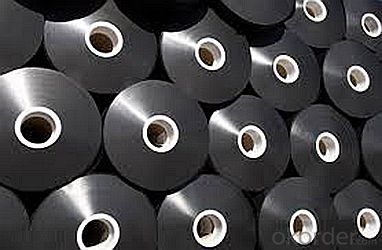
Packaging & Shipping
Packing: PLASTIC FILM INSIDE, AND WOVEN BAG OUTSIDE
Shipping: About 15 days after receipt the deposit
geotextile fabric
permeability,filtration,easy for construction
ISO and CE certificate
Good quality and competitive price
Our Service
Quality assurance
1.On a regular basis or as per your request,we entrust national testing agencies to conduct quality inspections
2. Strictly in accordance with the ISO9001-2008 international quality system standard,we monitor and manage the whole process throughout production,quality testing,and measurement to ensure product quality
3. For quality-related construction delay or substandard construction(except for damage or losses due to customer’s responsibility or irresistible natural disasters),we have refunding,replacement,and repair services.We will respond to customers’ feedbacks on quality issues within 24 hours.
FAQ:
Q: What kind of payments does jenor support?
A: T/T, L/C, Cash are accepted.
Q: Do you charge for the samples?
A: Accordeing to our company policy, the samples are free, we only charge the freight fee. And we will return the freight fee during the next order.
Q: Can you produce according to customers' design?
A: Sure, we are professional manufacturer, OEM and ODM are both welcome.
Q: Do you have other products?
A: Yes, please check the pictures:
- Q: Are geotextiles commonly used in rainwater harvesting systems?
- Yes, geotextiles are commonly used in rainwater harvesting systems for filtration and separation purposes. They help prevent soil erosion, filter out debris, and ensure the quality of collected rainwater.
- Q: How do geotextiles help in sediment control?
- Geotextiles help in sediment control by acting as a barrier that prevents soil erosion and the movement of sediment. They are designed to allow water to pass through while trapping sediment particles, thus reducing the amount of sediment that flows into nearby water bodies. Additionally, geotextiles can be used in combination with other erosion control practices to stabilize soil, promote vegetation growth, and minimize the impact of sediment runoff on the environment.
- Q: Geotextile and geogrid the same do
- Not the same, two concepts
- Q: Do you want to use glue to connect the geotextile?
- Hello, geotextile is not glue to connect, with needle and thread stitching, the request is not too high, but also intestinal smooth spot heap stupid do not need to stitch, as long as take the lead, put up on it.
- Q: Supply Tianhe District staple geotextile and anti-geotextile what is the same
- Staple geotextile is made of polyester staple fiber by acupuncture, because it can play the role of anti-filtration, and thus staple geotextile can also be called anti-geotextile. Filter geotextile is based on the use of the name, so long as it is able to play the role of anti-filter geotextile called geotextile filter, geotextile, including geotextile geotextile, filament geotextile, the preparation of geotextile, Woven geotextile, non-woven geotextile, polypropylene geotextile. Tianhe District used staple geotextile and anti-filter geotextile is the same.
- Q: How do geotextiles help with reinforcement of geogrids?
- Geotextiles help with the reinforcement of geogrids by providing a stable base and preventing soil erosion. They act as a separation layer between the geogrid and the soil, distributing the load evenly and increasing the overall strength and stability of the structure.
- Q: There is no geotextile in the sand filter with the biological retention
- You can use geotextile filter, I am specializing in the production of geotextiles
- Q: What is geotextile? Its use
- Geotextile is a kind of non-woven fabric. Its use is the road moisturizing, dam protection, reinforcement, isolation.
- Q: Water stable health with the geotextile, sticky on the water stable, how quickly cleared
- I professional production geomembrane / geotextile, the highest cost, I wish smooth
- Q: Are geotextiles suitable for use in contaminated soil remediation projects?
- Yes, geotextiles are suitable for use in contaminated soil remediation projects. Geotextiles can act as effective barriers, preventing the spread of contaminants, while still allowing water and air to pass through, facilitating the natural remediation process. Additionally, geotextiles can provide structural stability to the soil, preventing erosion and enhancing the overall effectiveness of the remediation project.
Send your message to us
Geotextile Non Woven Fabric Polyvinyl Chloride Low-Density Polyethylene Geomembrane
- Loading Port:
- China main port
- Payment Terms:
- TT OR LC
- Min Order Qty:
- 1000 m²
- Supply Capability:
- 1000000 m²/month
OKorder Service Pledge
OKorder Financial Service
Similar products
Hot products
Hot Searches
Related keywords
